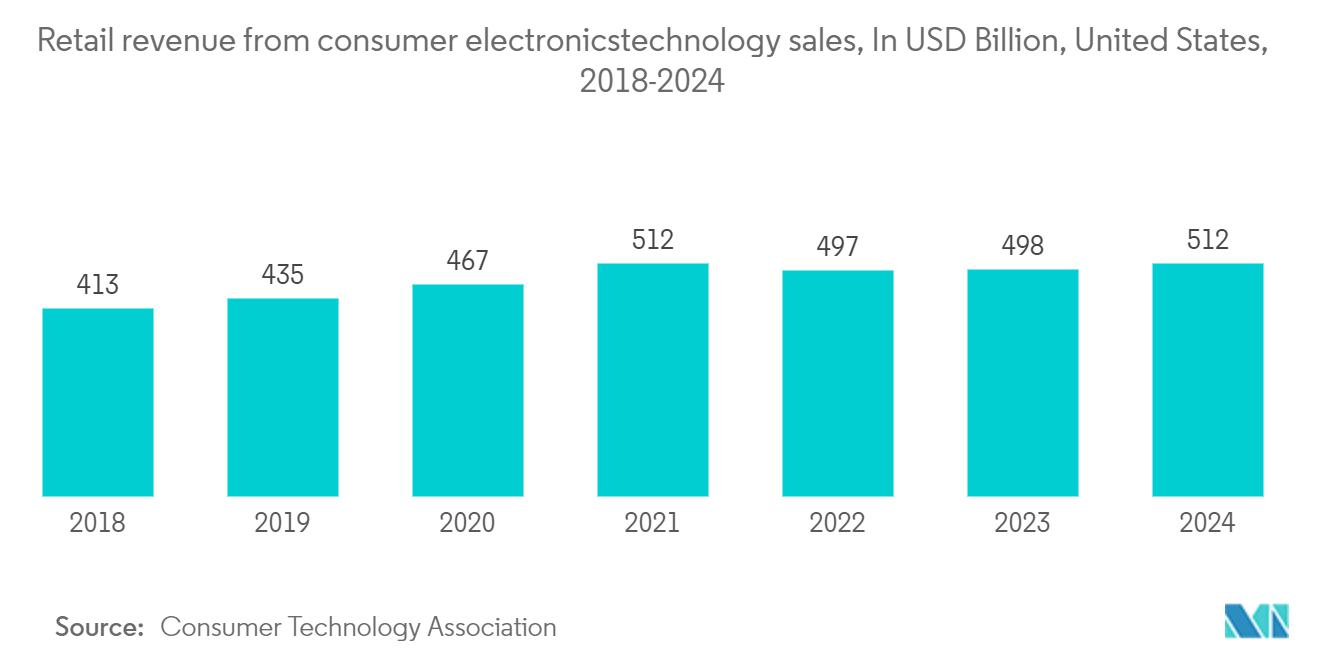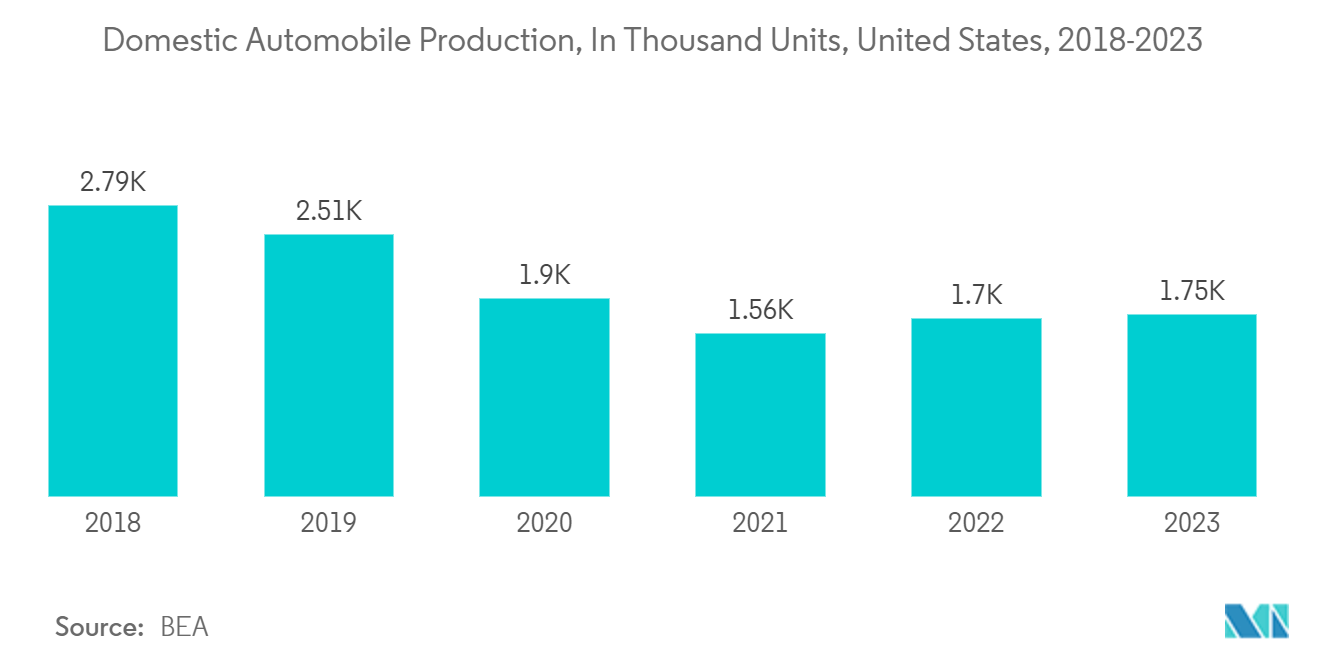Market Trends of United States Integrated Circuits Industry
Logic ICs are Expected to Hold a Significant Market Share
- Digital logic circuits are specifically designed to perform digital logic functions. They are used in various applications across sectors, making them essential for processing and manipulating binary data. Logic ICs enable the implementation of digital systems and provide the basis for modern electronic devices, from simple logic gates to complex microprocessors.
- Logic ICs are the widely adopted component in the overall IC market and are expected to witness significant growth during the forecast period. Logic chips have a wide range of applications in almost every digital product, from smartphones to arithmetic-logic units (ALU). In recent years, the growth in the automotive and smartphone industries has mainly driven the growth of the logic semiconductor component. However, the growth in applications like HPC and AI is now expanding the scope of logic components.
- The advent of the IoT and IIoT has largely impacted the design and size of electronics, with the introduction of technologies like smart homes, offices, wearables, remote monitoring, and control. Moreover, OEMs and designers consider miniaturization a primary focus while creating wearable technologies.
- Another advancement that demands miniaturized electronic components is portable electronic equipment, which requires smaller and thinner semiconductor systems for saving space and miniaturization. Due to highly integrated, high-speed applications like aerospace and electric vehicles, the demand for improved electrical performance to minimize noise effects is also evident. As a result of these considerations when designing end products, logic IC components are becoming increasingly important in developing advanced electronic systems.
- Consumer electronics devices such as smartphones, televisions, gaming consoles, and smart home devices rely on digital processing. Logic ICs, specifically digital logic ICs, are designed to process and manipulate digital signals and perform logical operations. They are essential for data storage, arithmetic calculations, control functions, and signal routing. Due to the growing adoption of these devices, the demand for logic ICs is projected to grow.
- As per the Consumer Technology Association, based on the projected retail sales for 2024, consumer electronics retail sales in the United States will reach USD 512 billion.

Automotive Industry is Expected to Have a Significant Market Growth
- The United States is one of the major hubs for the automotive industry. Notable automotive giants, including Honda, Toyota, Ford, Chevrolet, and Tesla, have established a strong presence in the region. Renowned for its advancements in automation, the region is paving the way for new opportunities for local vendors. Projections from the Center for Automotive Research (CAR) indicate that US motor vehicle production is set to hit approximately 11.7 million units by 2025.
- The transition to electrification in the automotive industry is driving the market’s growth. The United States, one of the largest markets for electric vehicles, has experienced rapid growth in EV sales in recent years. According to the IEA, electric vehicle sales reached 1.6 million units in 2023, up from 1 million units in 2022, marking a significant 60% increase.
- The US government has set ambitious targets for reducing greenhouse gas emissions and improving fuel efficiency standards, encouraging automobile manufacturers to increase EV offerings. For instance, in 2024, according to IEA, approximately 1 of every nine automobiles sold in the United States is expected to be electric. By 2030, one of every three cars in the United States will be electric. Thus, the emphasis on sustainability and energy efficiency in EV production drives innovation in semiconductor device manufacturing.
- Over the last decade, the automotive landscape has undergone significant transformations in production and sales. As per BEA, in 2023, approximately 1.7 million automobiles were produced in the United States. This represents an increase of about two percent compared with the previous year.


